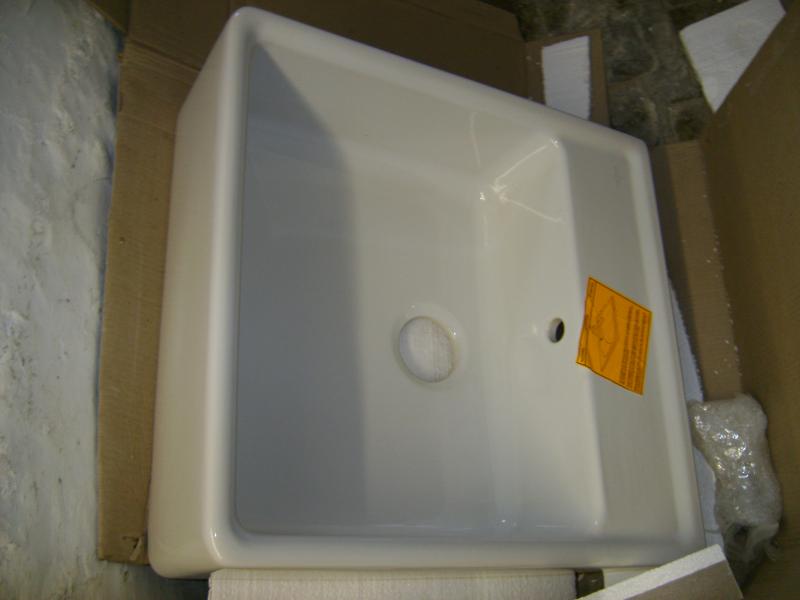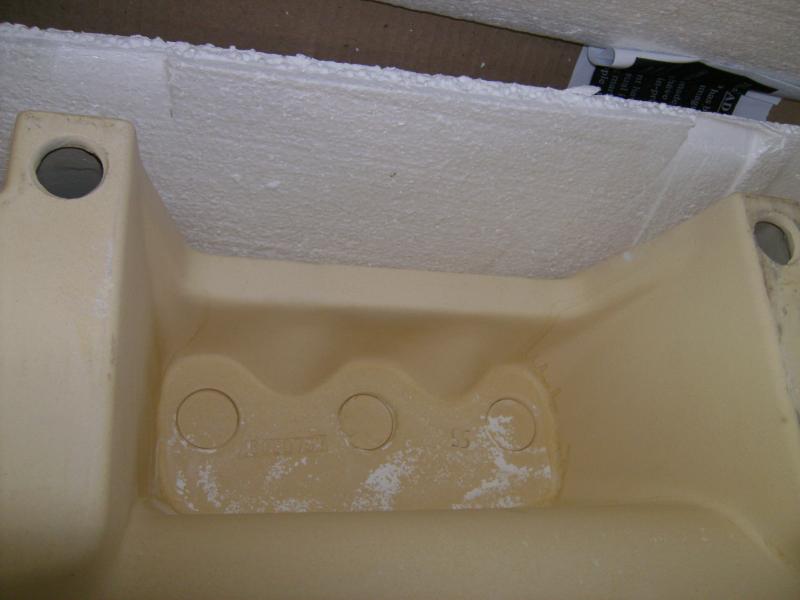You are using an out of date browser. It may not display this or other websites correctly.
You should upgrade or use an alternative browser.
You should upgrade or use an alternative browser.
ceramic butler belfast sink
- Thread starter crazydog
- Start date
Sponsored Links
dog - your sink is known as a Ledge Sink but they're usually sold (and known as Belfast Sinks) - 'Belfasts' come in numerous styles and sizes.
Anyway, your holes ... follow the instructions BUT don't give it too much wellie & use a smallish hammer (maybe a pin hammer) or a punch/hammer combo. The purpose is only to strike the centre of the ceramic plug so fracturing the break line ... this can be done with confidence that no damage will occur (obviously take care not to hit the glazed surface, on the opposite side, with the hammer pein (back of hammer). The waste hole is done in the same way, however sometimes the underside (unglaxed) of the waste hole can be left with a rough surface (difficult therefore to create an effective seal with the chrome/brass waste) ... this roughness can be smoothed away flat with a carborundum stone (I use a scythe/sickle sharpening stone) or even an old angle-grinder disc (manual, not in the grinder!!!!).
Anyway, your holes ... follow the instructions BUT don't give it too much wellie & use a smallish hammer (maybe a pin hammer) or a punch/hammer combo. The purpose is only to strike the centre of the ceramic plug so fracturing the break line ... this can be done with confidence that no damage will occur (obviously take care not to hit the glazed surface, on the opposite side, with the hammer pein (back of hammer). The waste hole is done in the same way, however sometimes the underside (unglaxed) of the waste hole can be left with a rough surface (difficult therefore to create an effective seal with the chrome/brass waste) ... this roughness can be smoothed away flat with a carborundum stone (I use a scythe/sickle sharpening stone) or even an old angle-grinder disc (manual, not in the grinder!!!!).
Sponsored Links
B
breezer
incase you dont want them, smaller hole easier to plug
Stuart - advantages = as per breezer's post (flexibility for final installation) plus cost implication for manufacturer in knocking-out & finishing the holes. Also manufacturing issues for distortion of the ledge if holes were introduced pre-glazing/firing.
dog - Belfasts should be 'under-mounted', namely the solid wood worktop should overhang the 2 sides and the back of the sink by approx 10mm and the front face of the sink should protrude ½ the sink wall thickness beyond the front edge of the w/t; this is also the case for your Ledge jobbie. Attempting to have the w/ts "butted up to the sink" will result in an unsightly sealed interface between the two and have the sink lip sitting well above the w/t.
When we overhang the w/ts we introduce a routed 'drip' (made with a ¼" round groove cutter) on the underside and apply a bead of clear silicon around the top edge of the sink (applied before the w/t is 'dropped' into position). This method avoids dribbles of silicon being visible - something that would happen if the sealant was applied last. Some installers don't bother with the lower drip (tut, tut)
When we overhang the w/ts we introduce a routed 'drip' (made with a ¼" round groove cutter) on the underside and apply a bead of clear silicon around the top edge of the sink (applied before the w/t is 'dropped' into position). This method avoids dribbles of silicon being visible - something that would happen if the sealant was applied last. Some installers don't bother with the lower drip (tut, tut)
i have also purchased a cabinet for it to sit on, can anyone advise me how to place the sink and how to fit the waste through the cabinet, as there does'nt seem to be any room for the trap between the sink and the cabinet
dog - the waste boss is accommodated by cutting a large(ish) dia hole through the top of the cabinet with a hole saw fitted in an electric drill (or cut with a jigsaw or similar) - doing this allows the sink to sit without rocking on the boss. The waste/trap is accommodated within the cabinet. Position of the sink is personal choice; some prefer the front face flush with the front of the doors, others like it proud of the doors. My own preference is for it to be proud (by the thickness of the sink front, say 25 - 30mm) as this creates a shadow-line at the sink/cabinet interface; it also allows any door fitted below to stand behind the sink front. The front edge of the worktop is generally positioned a little further forward (assuming granite or similar, solid wood); with a standard laminated jobby it's a bit more difficult to do the above as you may not have enough room to play with.
Check-out some kitchen websites for pictures of Belfasts in situ.
Check-out some kitchen websites for pictures of Belfasts in situ.
DIYnot Local
Staff member
If you need to find a tradesperson to get your job done, please try our local search below, or if you are doing it yourself you can find suppliers local to you.
Select the supplier or trade you require, enter your location to begin your search.
Please select a service and enter a location to continue...
Are you a trade or supplier? You can create your listing free at DIYnot Local
Sponsored Links
Similar threads
- Replies
- 5
- Views
- 704




